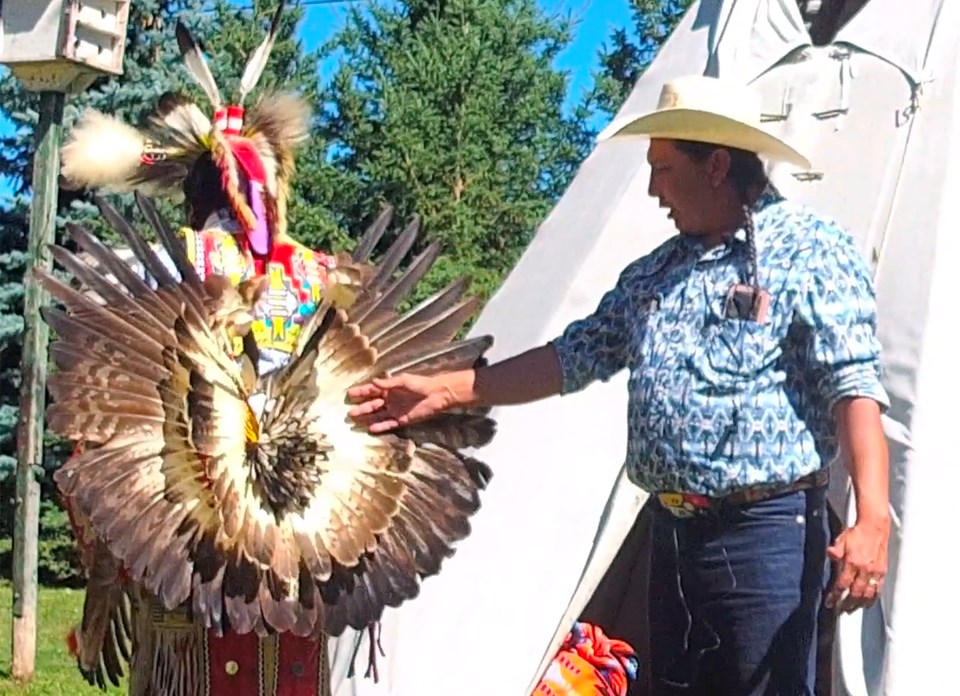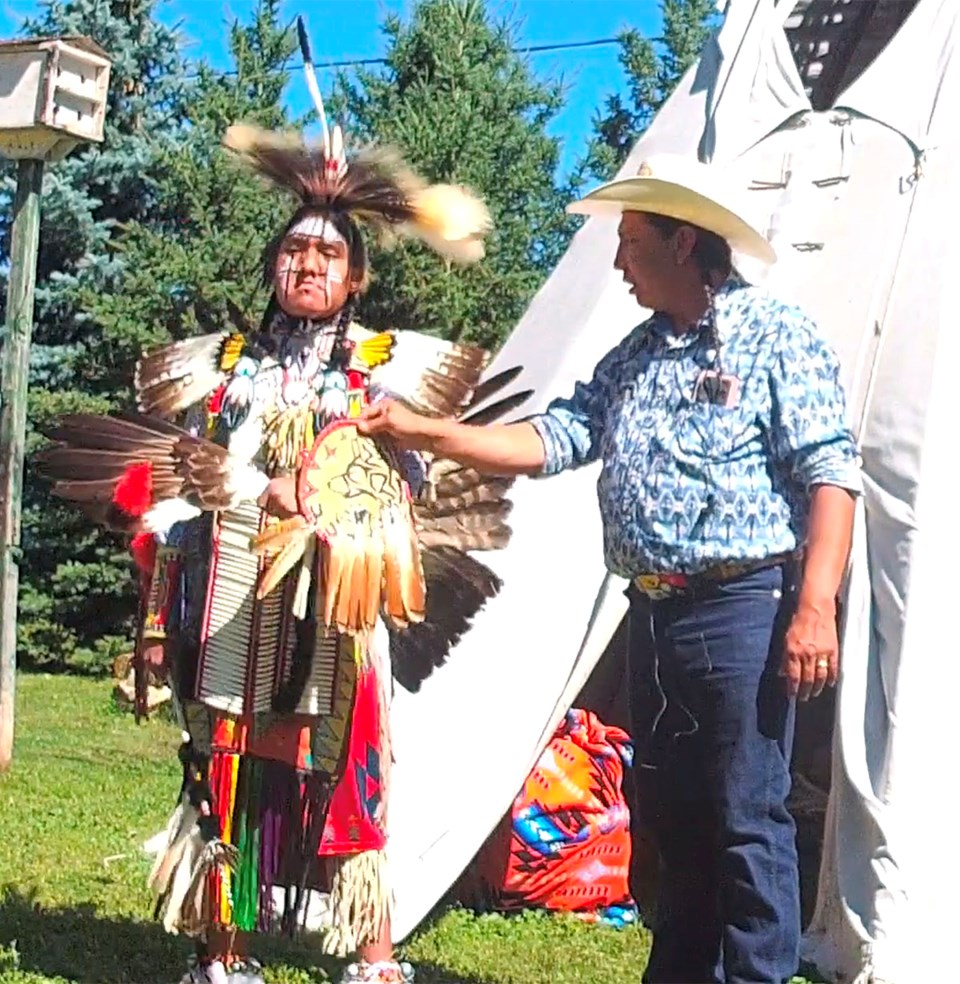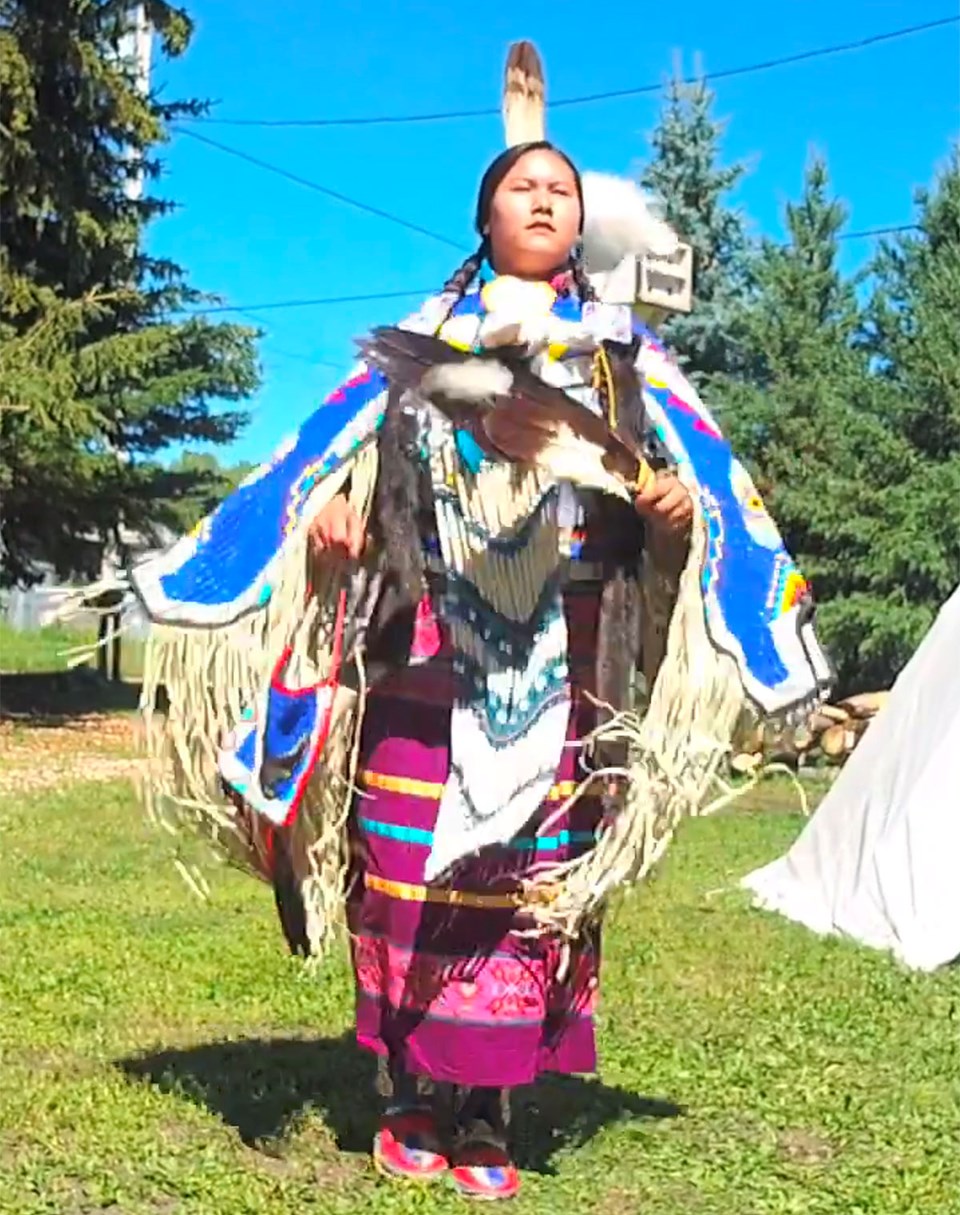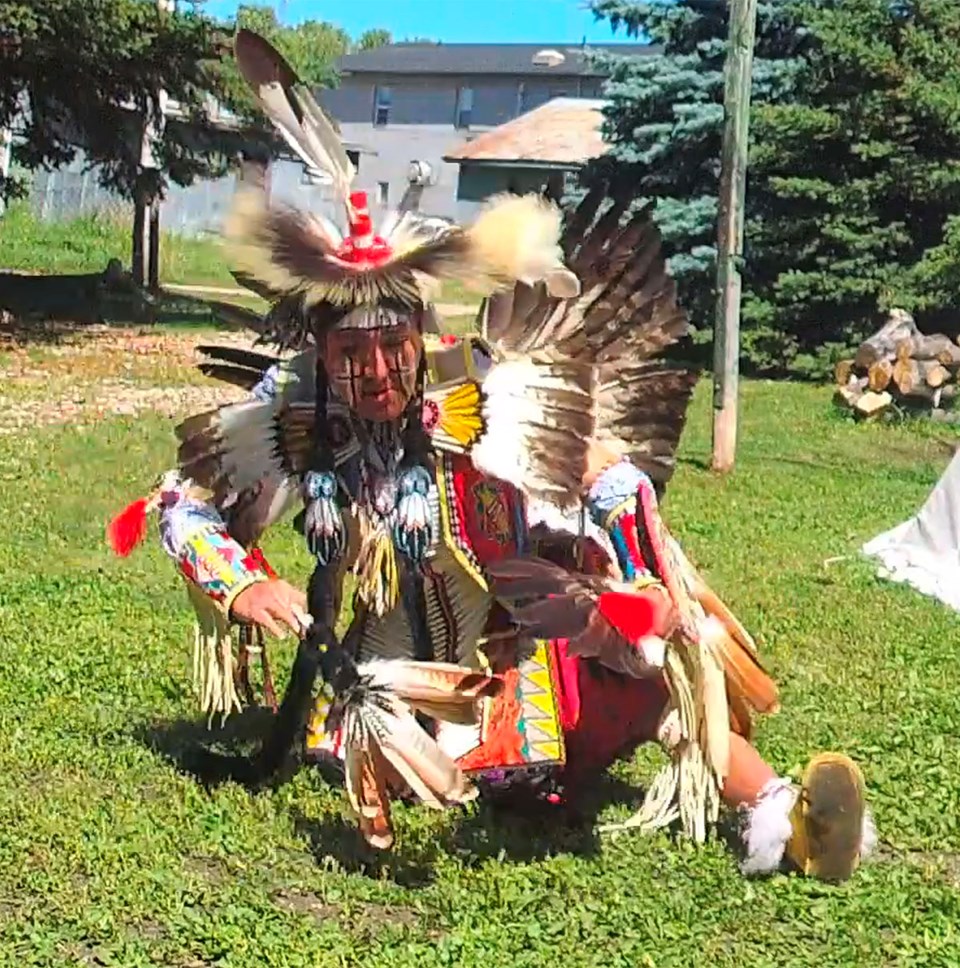The regalia worn by First Nations dancers is invariably the highlight of any powwow or round dance, and it only takes a slight glance to see just how much work goes into creating the always stunning and beautiful creations.
But it's not all literally just about song and dance. There’s history behind those amazing outfits, much of it dating back centuries and holding traditions that carry over into the modern era.
The Treaty Four Gathering would normally be a chance to show that all off, but with the event being forced into a virtual arena this year, the Saskatchewan Districts for Sport, Culture and Recreation decided to take a different route to passing on that education.
To that end, a series of videos featuring Plains Cree cultural adviser Harold Littletent and his Dancing Horse Dance Troupe have been released on the SCSCR website, featuring explanations of powwow and round dance songs and traditions as well as the meaning behind regalia and dances.
Tiny Littletent is one of those performers, and is featured performing a Sneak-Up Dance as part of one of the videos.
“When he was a little baby, we almost lost him three times and with the surgeries and all the things had to go through, he lost his hearing and couldn’t talk,” said Harold Littetent, “but he told me one time ‘when I put this outfit on I feel like Superman’.”
And for good reason -- Tiny is good at what he does, and carries the part of a First Nations warrior to perfection.
“Don’t ever be scared if you have special needs to do anything,” said Harold in the video. “This young man made me cry one time, he did a big show and all the people in the crowd started chanting his name, all they did was yell in the crowd ‘Tiny, Tiny, Tiny’. I felt really poud because he did something out there, made people realize he’s a somebody… and he’s a warrior.”
 The feathers worn by First Nations when they’re in their regalia aren’t just there for decoration. (YouTube screen capture)
The feathers worn by First Nations when they’re in their regalia aren’t just there for decoration. (YouTube screen capture)Tiny has the unique distinction of being the only dancer in Canada to have three eagle feathers as part of his regalia, a sign of his status in the community. The feathers are gifted to the dancers by elders as often as possible, sparing the eagles themselves -- and for a good reason. Eagles are messengers from the Creator, with their ability to fly higher than the clouds making them perfect for the job.
“The Creator looks down and the kihew (eagle in Cree) gets the message and comes down and tells our elders what the Creator just said,” Littletent explained, adding that if and when an eagle is harvested, certain traditions have to be followed out of respect for the bird.
The back of Tiny’s regalia includes a broad fan of feathers, including winterhawk and magpie feathers, with the latter a popular adornment of warrior headwear in the past.
Then there’s the intricately designed shield.
“A long time ago the warriors would go and get the oldest, oldest buffalo out of the herd and knock him down,” Littletent explained. “They used to cut the hump off the buffalo and use it for rawhide, and then they’d make the shield.”
Lore dictates that not even arrows or bullets will hurt Tiny when he covers his face or body with the shield.
 Harold Littletent explains the significance of the shield worn as part of powwow dance regalia. (YouTube screen capture)
Harold Littletent explains the significance of the shield worn as part of powwow dance regalia. (YouTube screen capture)Breastplates are often the most intricate part of the whole regalia, featuring beadwork both small and large and in many cases in stunning arrays of colour and design. In times past, it would be made entirely of bone and serve as a protective covering for the torso.
“Those bones would protect them, you see the police officers today with the bulletproof vests, this is just like that when you tried to hit him with an axe or a spear, it would bounce off,” Littletent explained.
That’s not even getting into the clothing itself, which also features incredible design work almost entirely done by hand in many cases.
The video continued with Tiny performing his Sneak-Up Dance, showing off the intricate footwork and movement one would use to intimidate another warrior on the field of battle.
You can check out that dance right here.
Littletent also explained the history behind women’s dancing and regalia, which today is often as detailed as you’d see on the men. Back in the day, that wouldn’t necessarily have been the case.“The women used to come out of the tipi fully dressed in buckskin,” Littletent explained. “Now you have the commercial stuff with the beardwork, back in the day they never had the luxury as you’d call it. They did everything by hand, the chest plate, the feathers, everything.”
Their dancing is also steeped in history and comes from a place of joy.
“The women used to stand by the tipis and when the men would go off on a buffalo hunt or war party, and when they came back they’d be by the tent crying in happiness because they brought home food or they came home safe,” Littletent said.
 Raven Gabriel dances in her regalia during the Treaty 4 Gathering video explaining the significance behind the impressive outfits. (Youtube screen capture)
Raven Gabriel dances in her regalia during the Treaty 4 Gathering video explaining the significance behind the impressive outfits. (Youtube screen capture)Raven Gabriel performed a dance representative of her Ojibwe tribe back home in Manitoba, showing off the impressive colours and designs one would expect.
Her dance can be seen beginning right here.
For more on First Nations culture and the stories behind powwow regalia and dances, be sure to check out the full set of videos on the SDSCR website.



